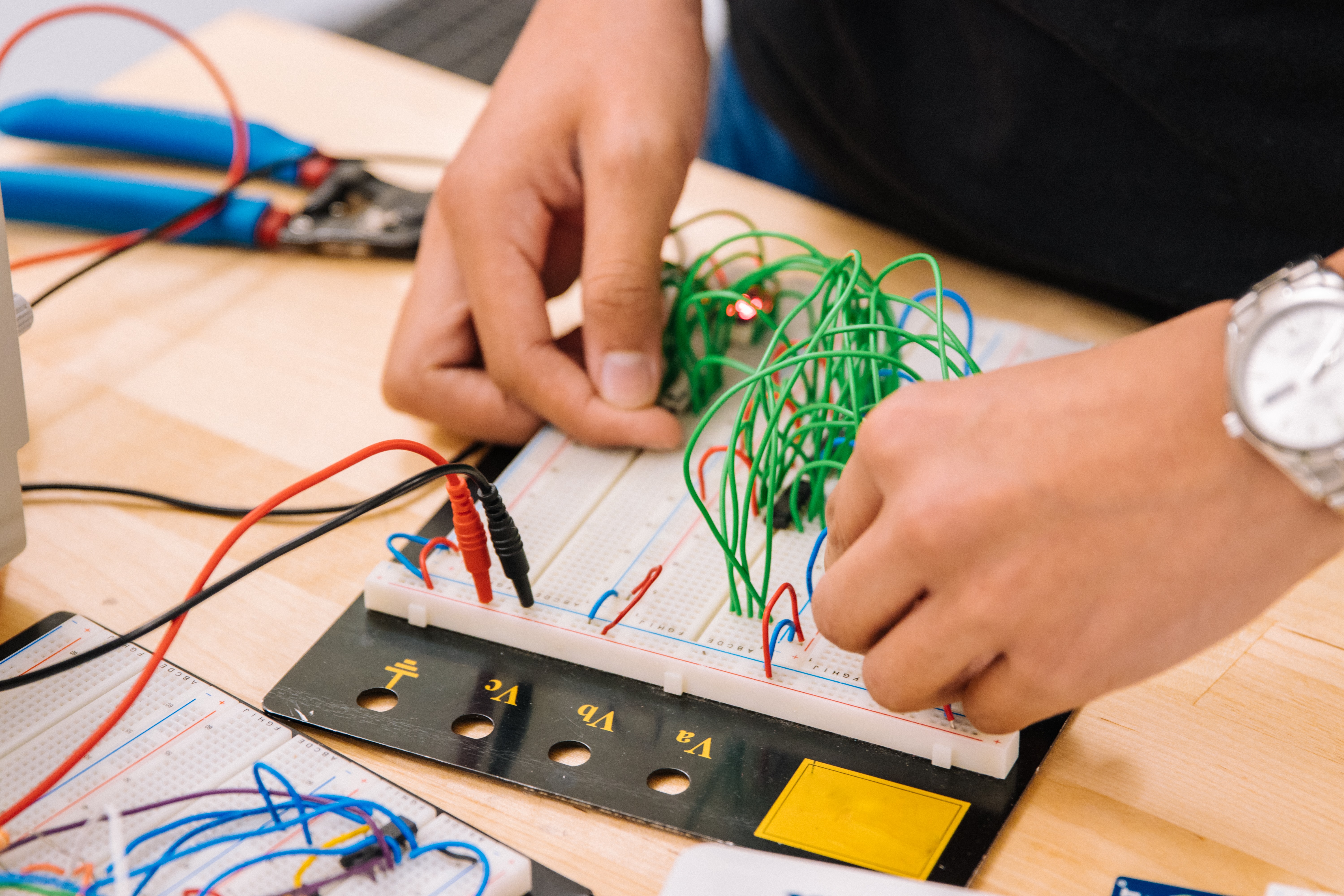Strategies for Remote and Hybrid STEM
Three classroom educators offer suggestions and resources for remote and hybrid STEM instruction

Teaching STEM is all about engaging students. Achieving this amidst a pandemic with all of the challenges and changes requires that educators get creative.
We chat with Chris Kaldahl, 2016 Department of Defense Education Activity Teacher of the Year and chemistry teacher with Arlington Public Schools in Virginia (whose district has been virtual this year), John VanFradenburgh, Department Head Technology Education at New York’s Valley Central Middle School, and Erik Gillman, AP Physics teacher at Gilbert Classical Academy in Arizona, about their experiences.
Best Practices for Juggling Multiple Modes of Study
“When we were doing hybrid it was a challenge, especially in technology, to keep 80 to 90% hands-on,” says VanFradenburgh. “There were times we had hybrid, four days per week in-person, five days per week in-person, and 100% online—all in the same class. I could not stare at a Google Meet screen if the students in front of me were doing an activity I had to monitor for safety.”
VanFradenburgh’s strategy to put Google Meet up on the projection screen in the room when possible, with the audio coming through the classroom’s built-in sound system, creating a mini theater with a webcam showing the whole room.
The hybrid students would do the hands-on activity in school, such as building air-powered paper rockets, while the fully remote students would build a straw rocket version. On the days the hybrid students were home, they would work on self-directed virtual flight activities, reading, tests, and study guides.
VanFradenburgh creates Youtube videos for both hybrid students on remote days and the fully remote students because “They work all weird hours of the night,” he says.
Remote Engagement: Riding the Line
When school campuses closed because of COVID-19, Gillman wanted to find a way for his students to continue to engage in data analysis while learning remotely. He created “The Line Rider Rides Again!” project.
Tools and ideas to transform education. Sign up below.
Working individually or in a small virtual groups, students reverse-engineer the physics of Line Rider (a game with a goal of creating a smooth sledding track that prevents the character from falling) to determine the acceleration of gravity and air resistance and the coefficient of kinetic friction between the sled and snow.
“I was ecstatic when I first found out that Vernier Video Analysis was available for use on Chromebooks,” says Gillman. “It allows students to engage in data analysis on the devices we most frequently use in class.”
With video analysis and the Line Rider investigation, students learn about gravity, air resistance, and friction in a really fun way, says Gillman. By analyzing the data, students can hone in on these concepts and see if their own results were reasonable.
“Since students had to work virtually, I made it a bit more scripted than usual to help alleviate any confusion,” says Gillman.
Students could also participate in virtual office hours, ask questions, and receive guidance. “We’d share our screens so that we could collaborate and problem solve together,” says Gillman.
No Fail Fun!
Keeping students engaged in STEM amid a world of distractions can be challenging.
“I think most days are like a really bad day of fishing,” says VanFradenburgh. “We are required to be available the whole class period in a Google Meet, so some days it’s just me staring at a screen hoping for a nibble or a bite.”
Sometimes, you just need the right bait. “We do ‘What are you Working on Wednesdays?’” says VanFradenburgh. “The students show what they did or saw that week that was cool. I pick what I thought was the coolest, and they win lunch on me. I also have a random winner of all the students who submit something to encourage participation.”
During remote learning at Gilbert Classical Academy, Gillman has made the Line Rider investigation optional for students and graded them primarily on being able to complete the process correctly rather than accurately. Students score bonus points if they create an “awesome” track to share with their classmates.
“The fun part about Line Rider is the creativity part—students can make tracks with jumps and loops, add music to the rides, and more,” says Gillman. “If students incorporate a really cool trick at the end of their bonus track, they get extra credit!”
Pro Tips
Chris Kaldahl offers a few suggestions for remote and hybrid STEM success.
Be okay letting go. “This is an extraordinary year with extraordinary challenges for everyone,” Kaldahl says. “Adjust your expectations for students, parents and yourself. It will look different because it is different. Do not beat yourself up or take the burdens of the entire world upon you. This is a marathon and our students and communities need us for the long haul.”
Take care of yourself. Do IEP/504 meetings from your phone while on a walk, suggests Kaldahl. “Say no if you need to say no to requests that you might normally say yes to,” he says. “Take care of yourself and your loved ones.”
Work with a team. “I am blessed to have a team of four other chemistry educators to share the workload,” Kaldahl says. If possible, share planning, test writing, and activity planning. You may give up some autonomy, but you gain some sanity because many hands do make lighter work.
Digital STEM Resources They Use
Edpuzzle - “Being able to draw on a large library of existing content as well as creating our own video content has been very helpful,” says Kaldahl. Students sometimes have Edpuzzle videos and question sets assigned before a topic or unit to “prime the pump” and prepare them for activities or learning during synchronous learning. Edpuzzles are also used to reinforce ideas, and at other times, serve as formative assessments to evaluate where students are with their understanding.
Nearpod - A feature-rich teacher tool for online teaching and learning that has the ability to integrate so many different ways of presenting material (myriad formative assessment tools, google slide integration, etc). “This, combined with its ability to be used either as a teacher-controlled live experience or as a student-paced, asynchronous one, is truly a game changer in this virtual environment,” says Kaldahl.
Classkick - “I love its ability to see all student work simultaneously and to allow students to both give and receive help from their classmates,” says Kaldahl.
ExploreLearning Gizmos - A substitute for some of the laboratory experience being lost in the virtual environment, with admittedly mixed student reviews, says Kaldahl.
Google Slides - Helpful to create sorting activities and manipulatives. “One more arrow in our quiver of online tools,” says Kaldahl.
Paxton Paterson - Used in Valley Central Middle School for in-person learning, as well as additional technologies and platforms such as Google Classroom, says VanFradenburgh.
Flinn Scientific’s Whitebox Learning - Students in Valley Central Middle School will be using this platform to design virtual CO2 dragster cars and competing with other students, says VanFradenburgh.
Vernier Video Analysis App - Students can insert a video with recorded motion, mark points to track the object in motion, and set the scale of the video. “The app generates accurate and visually rich graphs reflecting recorded motion that students can analyze as part of the scientific discovery process,” says Gillman.
Sascha has nearly two decades of experience as a freelance journalist writing for national magazines, including The Washington Post, LA Times, Christian Science Monitor, National Geographic Traveler, and others. She writes about education, travel and culinary topics.

